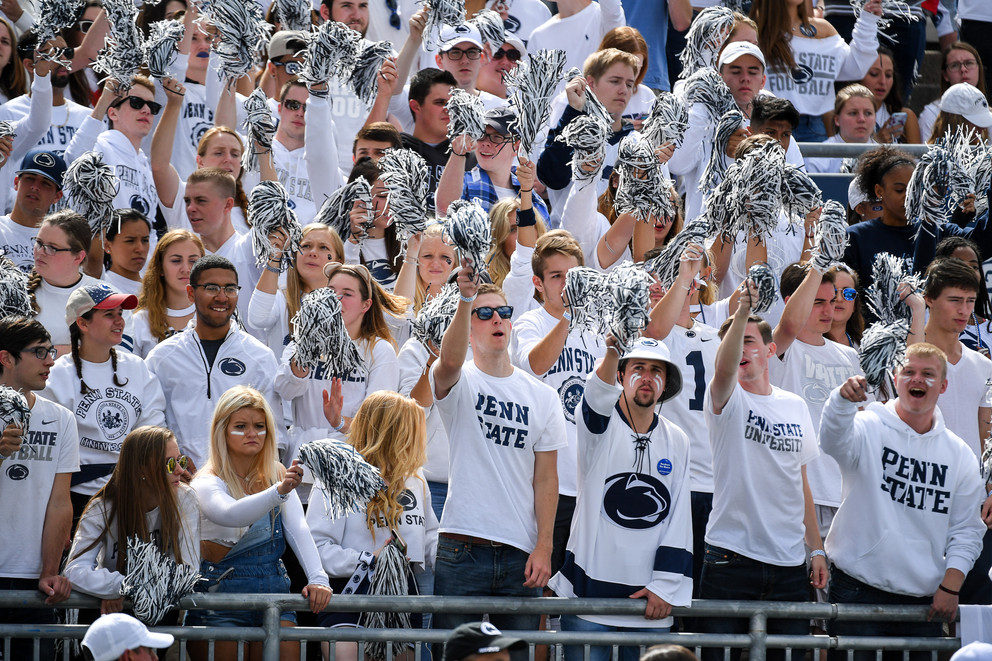When looking at the demographics of students, it is clear that Penn State University is a Predominantly White Institution (PWI). According to the 2018-2019 Academic Year, the percentage of African American students at Penn State University was 5.65%, while the percentage of White students was 65.6%.
What exactly is a “PWI”?
It’s a term that describes institutions of higher learning in which Whites account for 50% or greater of the student enrollment.
With Penn State certainly fitting this role, it’s important to analyze what impact this has on a college campus.
In her research paper, Diane Lynn Gusa, adjunct professor at SUNY Canton, asserts that the racial discrimination and lack of representation at Predominantly White Institutions have been shown to adversely affect Black students’ learning, development and identification with their university.
A PWI does not have to be explicitly racist either. A hostile environment can be created when “White culture permeates the language, traditions and learning requirements.”
While the presence of Whiteness and privilege may not be visible to Whites, it is something that can shape the college experience for a student of color.
In an article by researcher Torrie A. Cropps, who attended a PWI as a Black graduate student, explains that minority students seek out other students and faculty who are similar to them or who share similar experiences. But if the university is composed of a majority of White people, there is limited opportunity to interact and it could cause minority students to feel “unwelcomed and devalued by the institution.”
Along with students, Black professors are also in the minority at Penn State. Gary King, a professor in the Department of Biobehavioral Health, and Darryl Thomas in the department of African American Studies created a report titled “More Rivers to Cross” detailing the obstacles Black professors at Penn State have dealt with for the past 15 years.
In 2018, there were 3,474 full-time faculty employed at University Park. Over this span of 15 years, these professors found that the number of full-time Black faculty at Penn State decreased 1.9%, from 105 to 103.
In their report, they examine each academic college, with some being more diverse than others. For example, out of 771 professors in the College of Liberal Arts, 36 were black, increasing by 12.5% since 2004. The report points out, however, that a majority of professors in the Liberal Arts’ Department of African American Studies were African American. In the College of Engineering, only six professors (1.4%) were Black.
The same report also touches on the aspect of SRTEs, which are student evaluations of professors done at the end of the semester. They are also used for promotions and annual raises. The report found African American faculty members are “more likely to be faulted for classroom policies regarding technology, tardiness, late work and attendance in comparison to their white counterparts.” Because of an intrinsic bias against African American professors, King suggests there are better methods for evaluations than the SRTEs.
Ebony McGee, assistant professor of diversity and urban schooling at Vanderbilt University, studied the mental health of Black college students, specifically how “grit” pushes students to persevere through difficult academics. While all students need to be resilient, Black students have to carry the additional weight of “proving their intellectual worth in the face of overt or covert racism.”
McGee’s study uncovered startling incidents of anxiety, depression and suicidal thoughts among Blacks – no doubt impacted by the perceived intellectual inferiority and racism they face.
What is Penn State doing to help students of color feel safe, supported and genuinely part of the community?
Many Black organizations on campus work to help and empower minority students. These student-run organizations strive to not only include students of color, but make them feel comfortable, welcomed, and act as a safe space to share their voice.
Black Caucus: Serving as the umbrella organization for all minority students, this group dates back to 1967 when it began as the Frederick E. Douglass Association. It was first formed to petition for the creation of an Afro-American History course, as well as increased Black enrollment and awareness at PSU. In 1969, it transitioned into the Black Student Union, and two years later it became the Black Caucus. The organization holds weekly discussions called “Sankokfa,” which translates to “we must go back and reclaim our past, our history, so we can move forward.” Their goal is to help students of color have a space to feel supported while transitioning into a Predominantly White Institution. They also attend meetings of the University Park Undergraduate Association (UPUA) to make their voices heard.
The Underground: A multicultural student-run media site that aims to tell the “untold stories” within Penn State, The Underground works to create an open forum of discussion while promoting diversity and community involvement.
Queer and Trans People of Color at Penn State: This organization’s purpose is to help promote awareness, celebrate sexual and cultural differences as well as to create “productive social spaces for those who identify as queer people of color.”
BLUEprint: This is a peer mentoring program that promotes the wellbeing of first-year and change-of-campus/transfer students of color. They focus on offering academic, cultural and social support to students. Mentees are paired with a trained mentor that will support them. The program also invites the students to participate in workshops, community service projects, campus events and more.
Additional resources:
Paul Robeson Cultural Center: This center was established in 1972, and it’s mission is to “emphasize the diversity of the historic, current and future roles of African American culture…” The programs, exhibits, events and activities of this cultural center headquartered in the HUB help to create an “opportunity to explore and to engage in dialogue and/or study of issues related to culture including: diversity, leadership, racial identity development and community development.”
Office of the Vice Provost for Educational Equity: This organization serves as a “catalyst and advocate for Penn State’s diversity and inclusion initiatives.” Their office includes the Multicultural resource center, which provides individual counseling and educational services that address everything from study skills and money management to offering assistance for targets of bias-motivated incidents.
Report Bias: This website allows students, faculty, staff, alumni and guests to report acts of bias or intolerance that occur on campus.
For an extensive list of diversity resources at Penn State, click here.
VALLEY hopes these organizations and resources are helpful to students of color. However, VALLEY also understands that organizations and resources are not enough. In order to create a truly inclusive environment, every single student and faculty member must call out racism and support diversity on and off-campus. By acknowledging the fact that Penn State is a Predominantly White Institution and understanding where improvements need to be made, the university can pave the way for a campus that better empowers, integrates, and celebrates everyone for who they are.





